Or – sadly –
the lack thereof
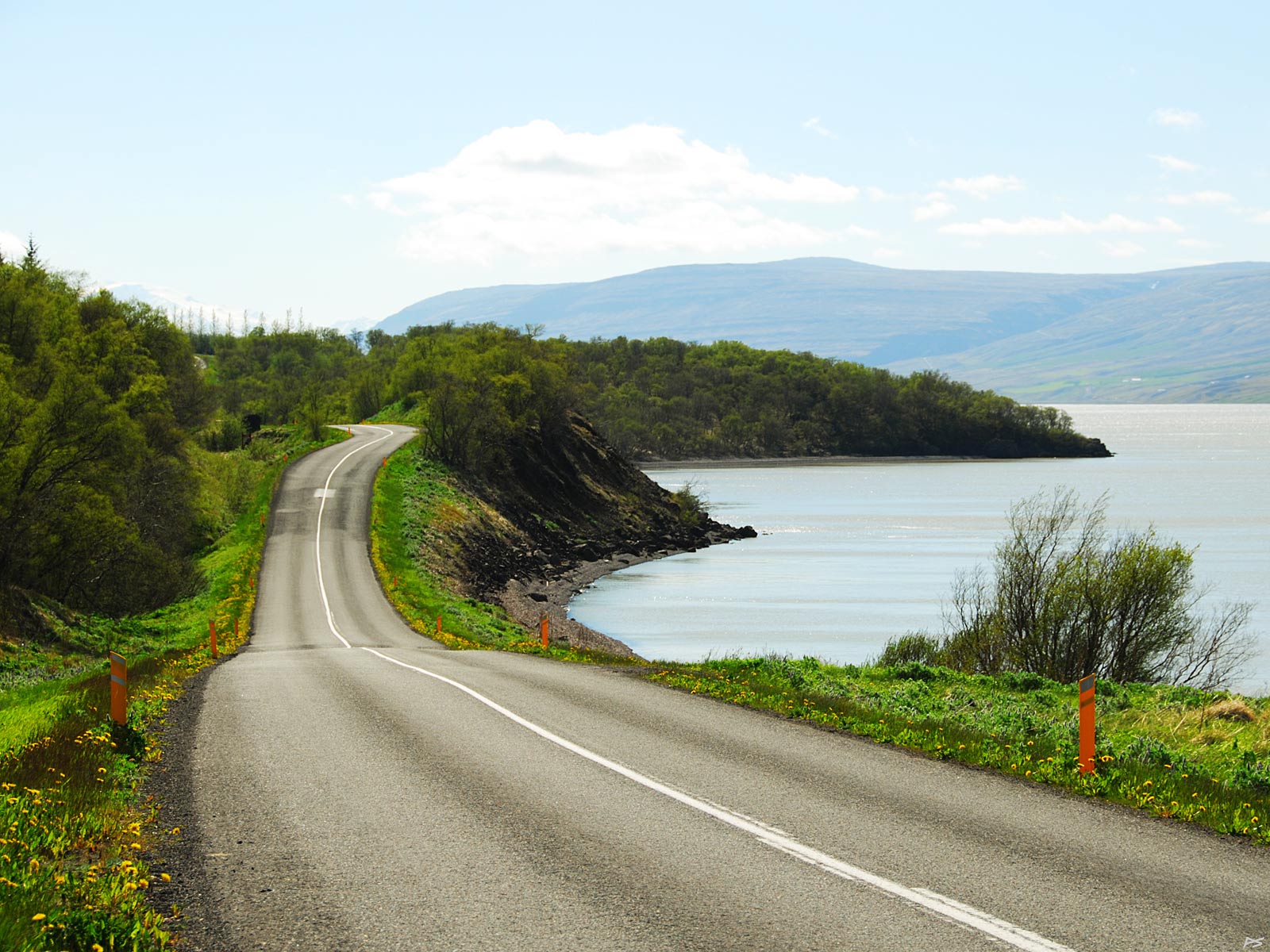
(2010-06-04)
Hallormsstadaskogur, west of Egilstaðir. The lake is Lagarfljót (also called Lögurinn), the lake featuring the monster serpent Lagarfljótsormurinn and a cruise ship with the same name.
When the first settlers came to Iceland more than 1100 years ago, an estimated 25–40% of the island was forested, essentially by Downy Birch (Betula pubescens), but also some Willow species (Salix) and Rowan (Sorbus aucuparia). But the people needed building materials, firewood, and charcoal for smelting iron and making tools. Therefore the forest was cut down faster than it could restore itself.
Only in the southeast and east, and in the far northwest, the ground (under the topsoil) may contain silt, humus and some peat, essential for holding on to water and thus facilitate reestablishment of vegetation. This seems to be the case in this planted Hallormsstaðaskógur south of Egilstaðir. In most of the country the ground contains only volcanic rock and sand which just let the water through. Then, when the vegetation disappears, the topsoil is washed away or blows away.
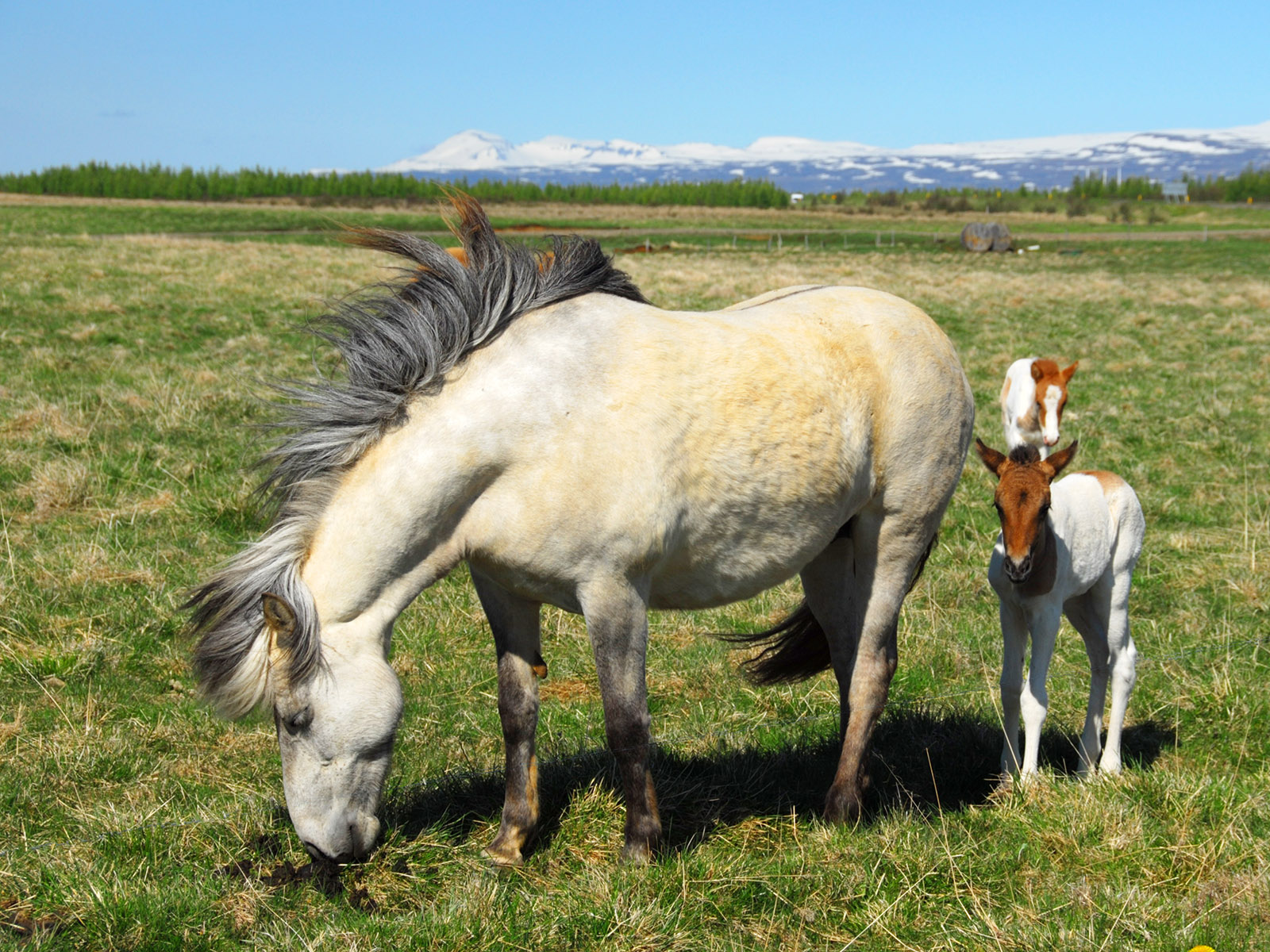
(2010-06-04)
Horses, Hallormsstadaskogur, west of Egilstaðir. They bite the grass and may pull it up with roots,
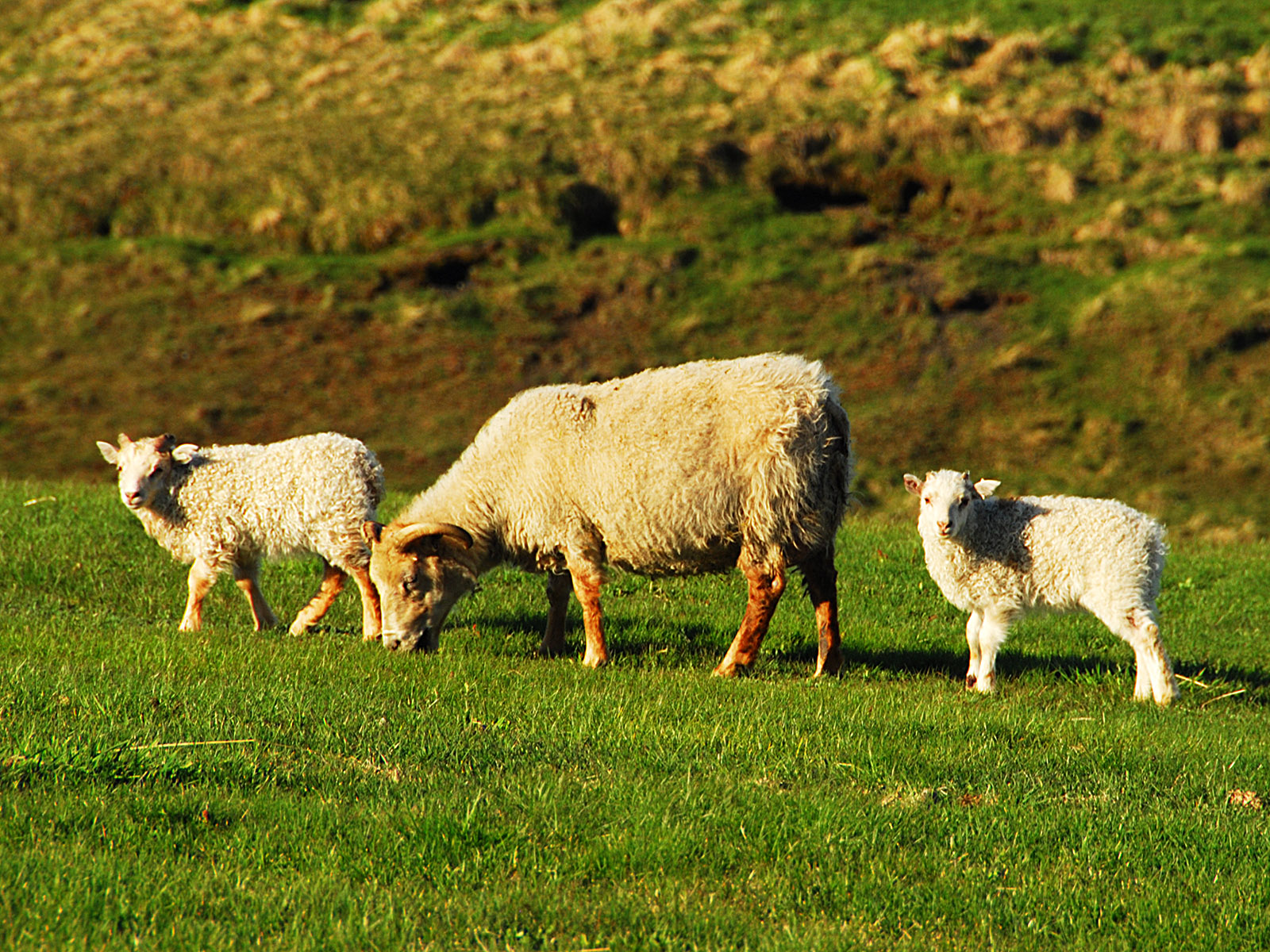
(2010-06-05)
Sheep, Mývatn
Iceland has mild winters with fluctuating temperature and much snow rarely accumulates on the ground. Therefore, to begin with the sheep, horses and cattle could stay outdoor and graze all year. Then farmers could just let the number of grazing animals grow, which often led to overgrazing, exposing the topsoil. This turned parts of the country into a desert, and the sand from a desert also blows over fertile land. (It should be mentioned that there have been other reasons for the destruction of vegetation and topsoil: Lava flows, flooding from melting glacier caused by volcanic eruptions (jökulhlaup), and sand carried by the wind from beaches, riverbeds and deserts.)
The Soil Conservation Service of Iceland was established already in 1907. One of their first action was importing large quantities of barbed wire to stop grazing on some selected land, which at least proved the negative effect of overgrazing. Lately the sheep farmers have been made responsible for overgrazing, encouraged by a part of the production subsidies.

(2010-06-07)
As the natural forest disappeared, finding building materials became difficult. This is demonstrated by the old farm buildings in the Glaumbær museum north of Skagafjörõur and Sauðárkrókur, and near Varmahlið.
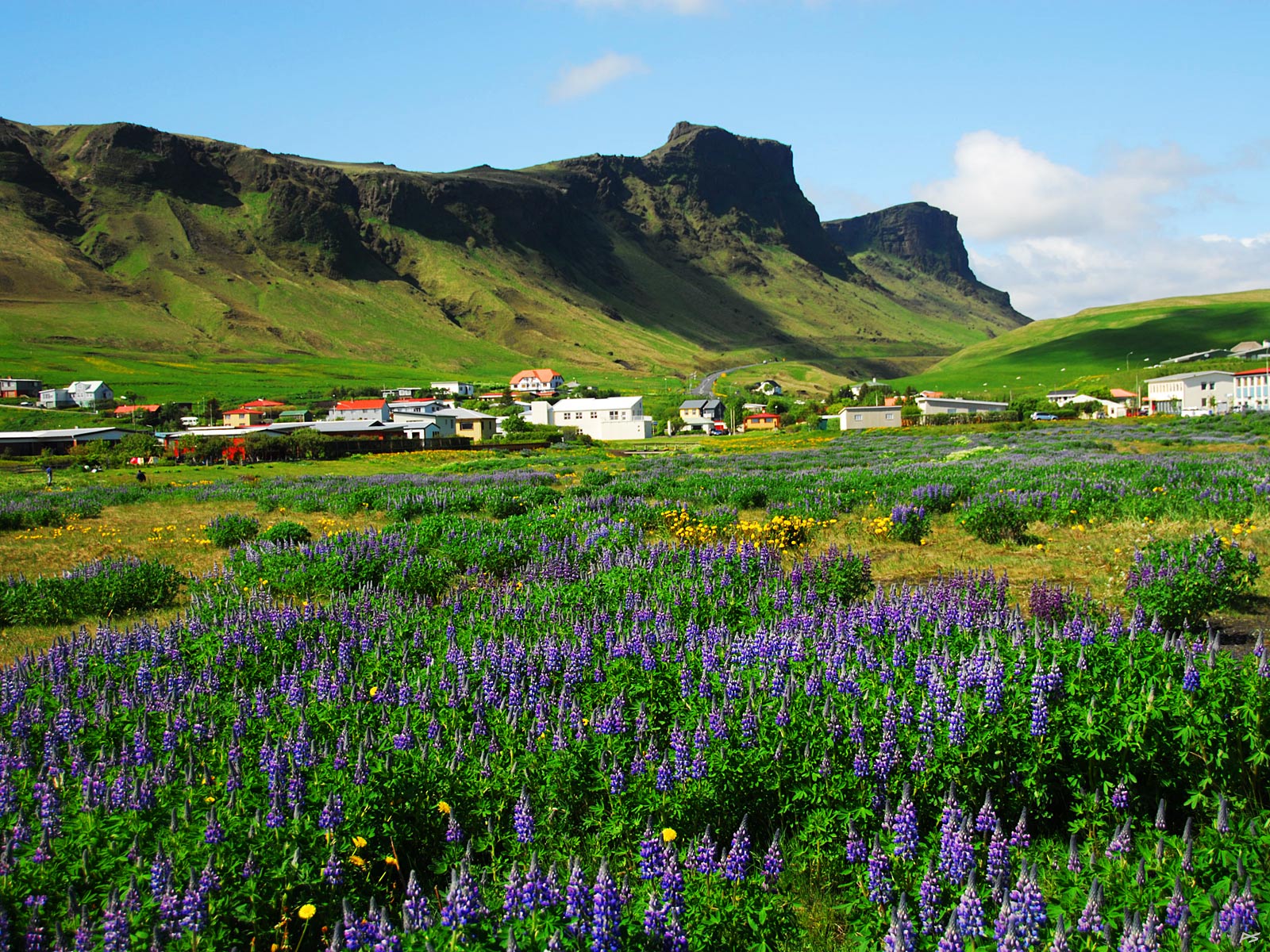
(2010-06-02)
To reestablish vegetation, many types of plants, mostly grass, have been tried out, but with limited success. In 1945 Alaskan (or Nootka) lupin (Lupinus nootkatensis) was introduced on a small scale and later (1969, 1986) on larger scales. Lupine has symbiotic root bacteria fixing nitrogen from the air, so no nitrogen fertilizer is needed, and it yields lots of seeds, so now large areas are covered. It does prevent soil erosion and sandstorms, but it is not suited for fodder. Unfortunately it doesn't allow other plant species to establish on the soil it has fertilized, and it continues spreading, killing lichens, moss and other plants, including the beloved bilberries. The spreading of the "wolfish plant" (lupine<lupus=wolf) is now out of control. (The picture is taken close to the beach in Vík í Mýrdal where they also fight a different kind of erosion, the one by the sea waves.)

(2010-06-01)
This picture is taken at the Geyser site. Covering the whole country with vegetation takes time, whatever kind it is. In the meantime, if you leave the city and the paved roads, yours shoes will become considerably more dirty than you probably are used to.
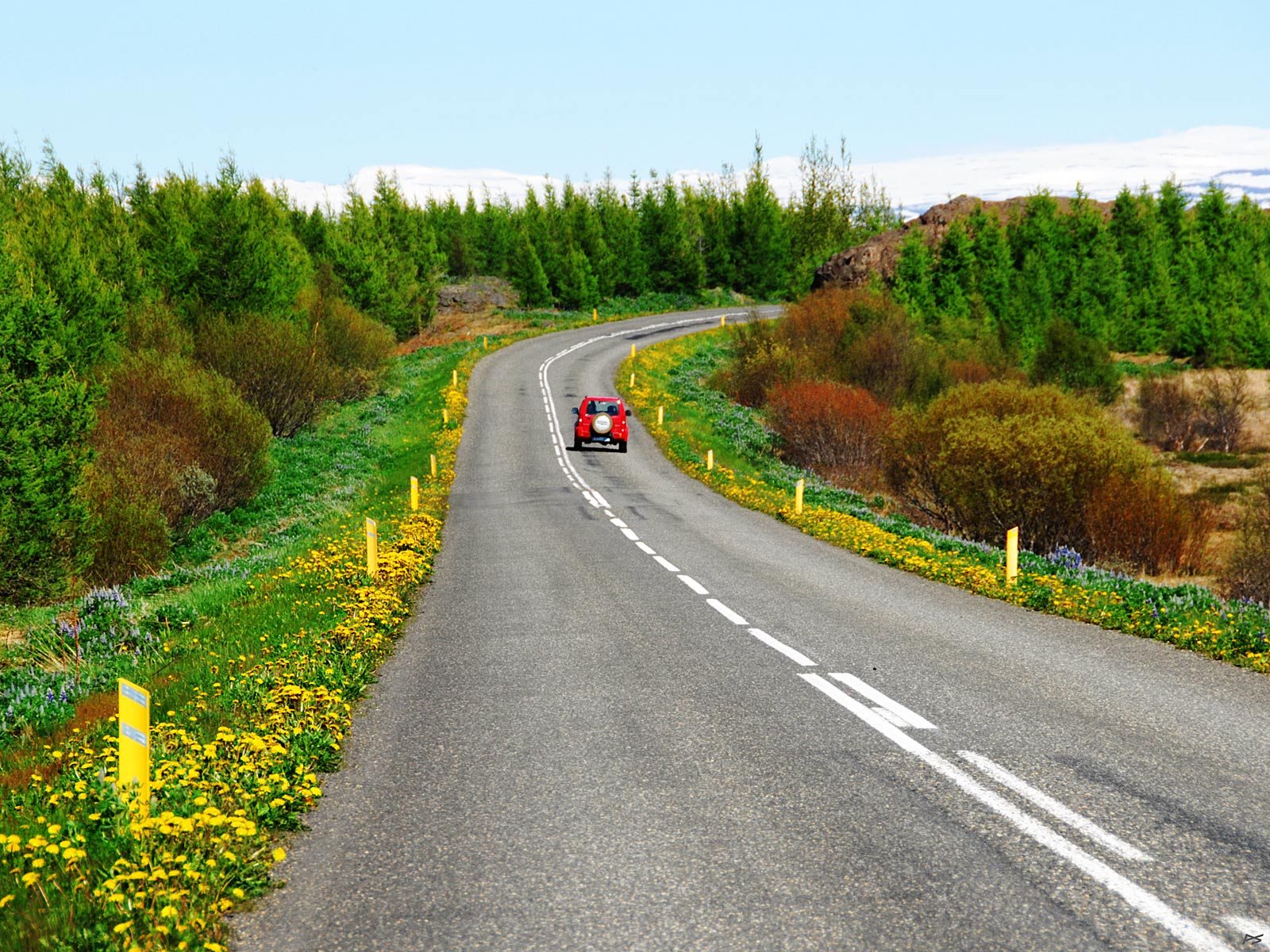
(2010-06-04)
For the last hundred years planting of new forest has been going on. The picture is from the largest of them, Hallormsstaðaskógur near Egilstaðir, stretching for an estimated 18 km along the east shore of Lagarfljót. The planted species are the native Birch, Rowan and Aspen, but also foreign species like Siberian Larch (Larix siberica), Sitka Spruce (Picea sitchensis) and various species of Alder (Alnus). Black Cottonwood (Populus trichocarpa), a 'tall' tree with fragrant buds and rather aggressive roots, have been planted in parks since 1950, later also in 'forests' and as shelter belts, quite conspicuous among the otherwise low vegetation (there seems to be some ahead, just around the bend). As seen, dandelion has also invaded Iceland.
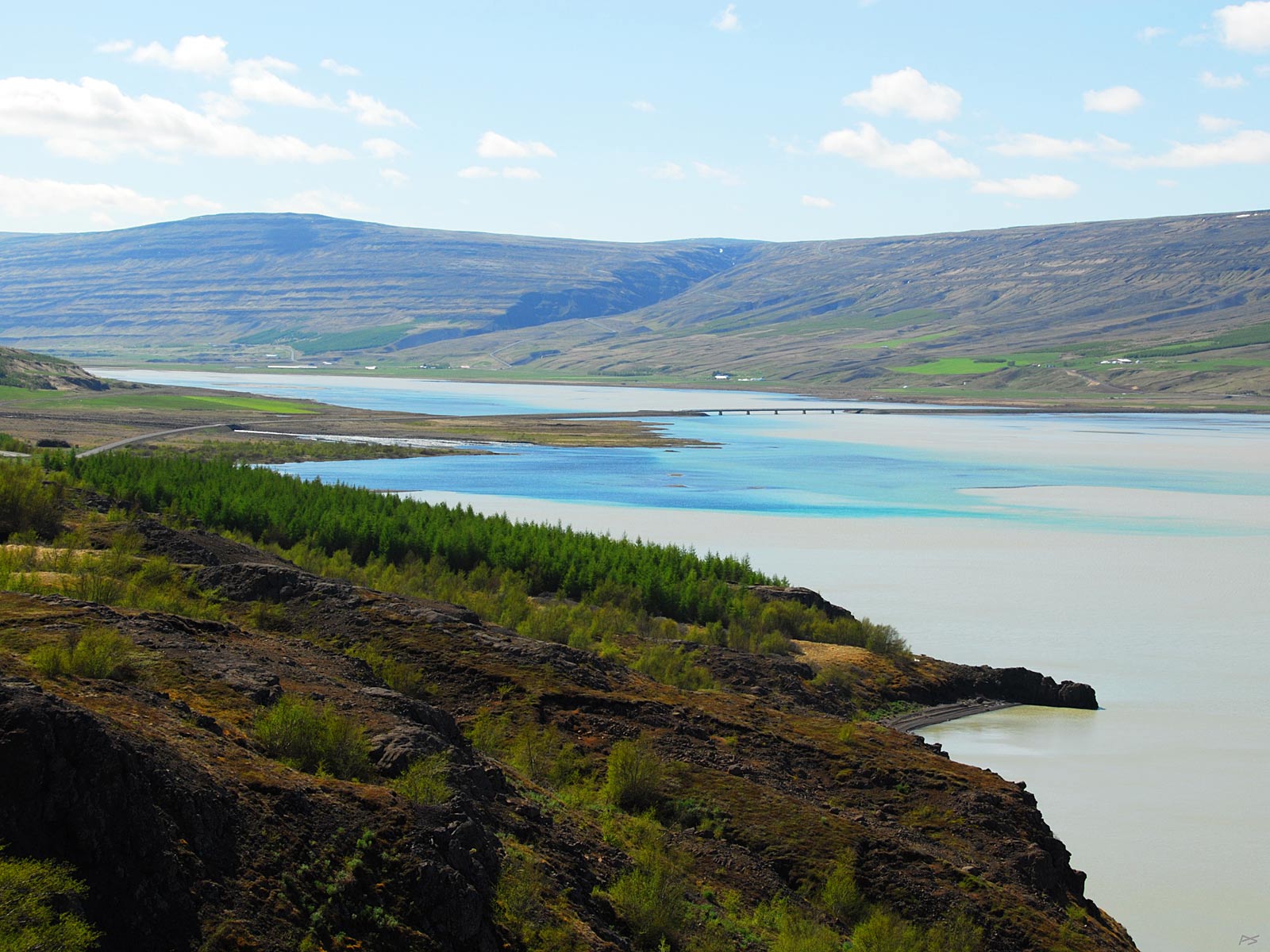
(2010-06-04)
The south-west or inner end of Hallormsstaðaskógur and quite close to the inner end of the lake Lagarfljot. Her the lake is crossed by a bridge. Up the hill near the centre of the picture it may be possible to perceive the waterfall Hengifoss. Note that the lake looks dirty, except where a river or brook enters it to the left.
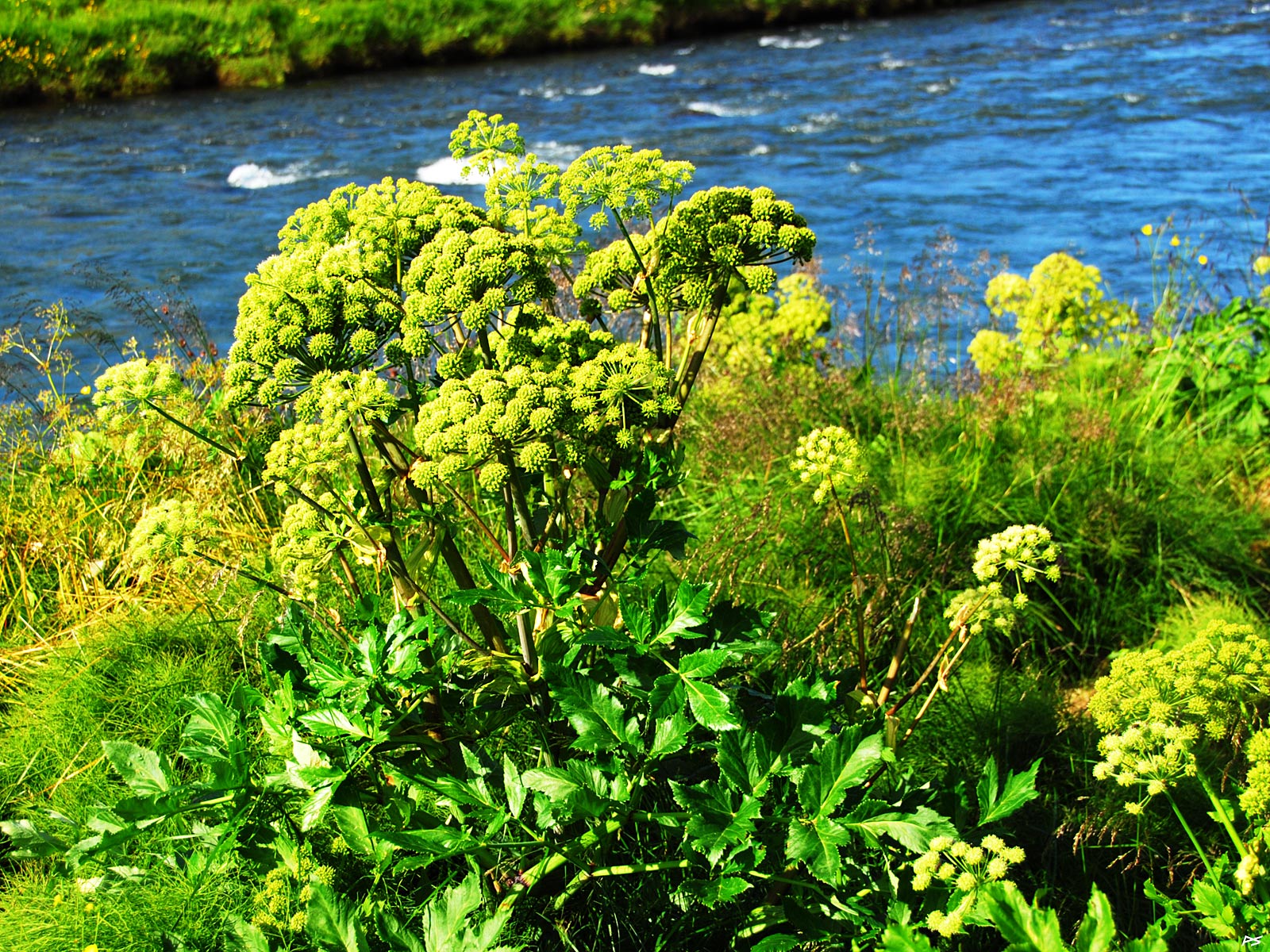
(2010-06-06)
Angelica, Garden angelica, Norwegian angelica etc. (Angelica archangelica) grows in moist places all over the country. It has been cultivated since Iceland was populated. Once most farms had a patch with 'hvönn' or 'ætihvönn' (=edible-angelica), and it was important for export until about year 1500. In Iceland's first lawbook (Grágás) there is even a law against stealing this herb. It was used for medical purposes and as a vegetable. The picture was taken in Jónasarlundur in Öxnadalur.
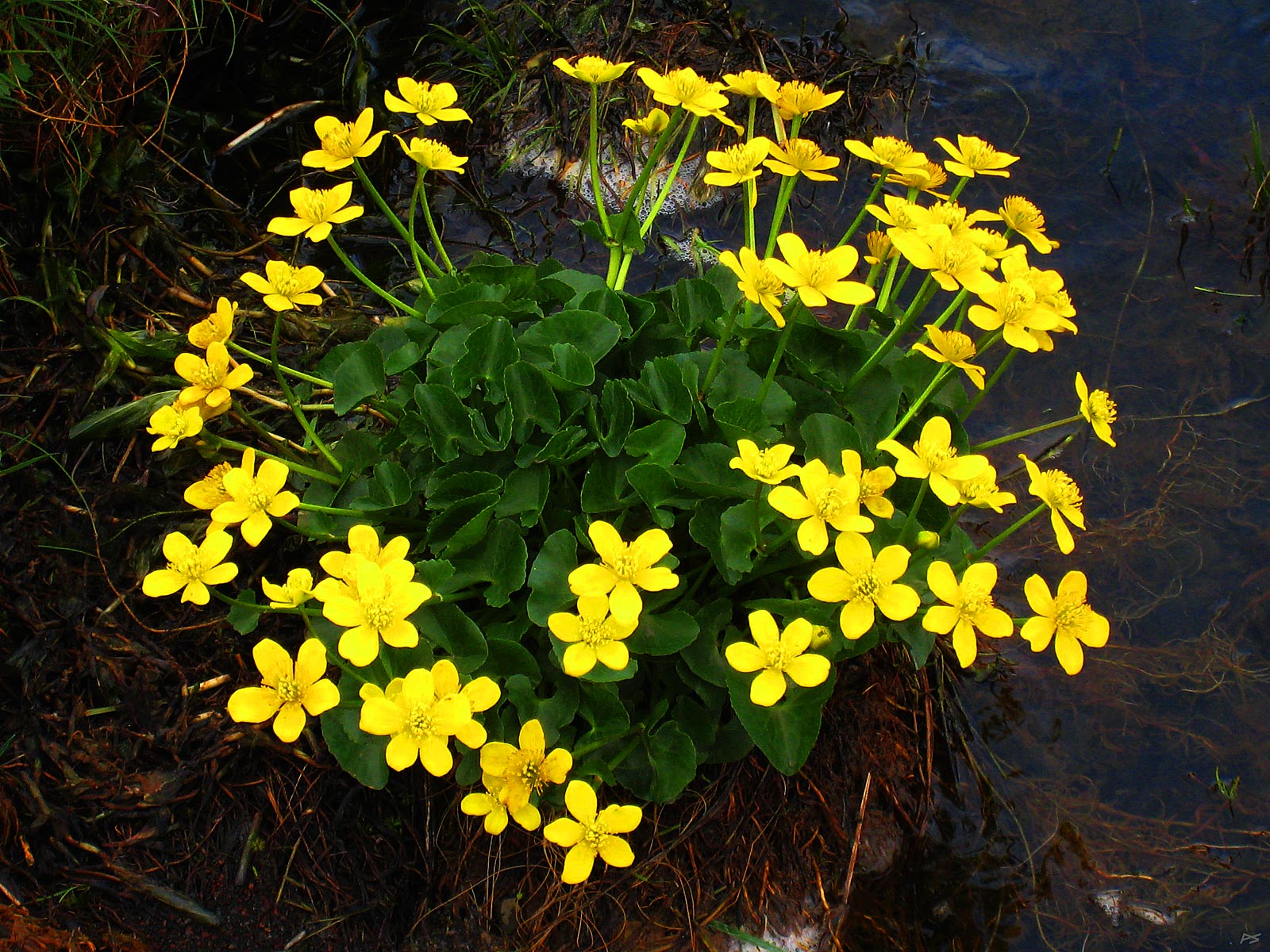
(2010-06-02)
Marsh Marigold or Kingskup (Caltha palustris) grows in wet places at moderate latitudes around the northern hemisphere. 'Hófsóley' tells the Icelanders that – finally – spring is here. But don't eat it; it may even irritate the skin.
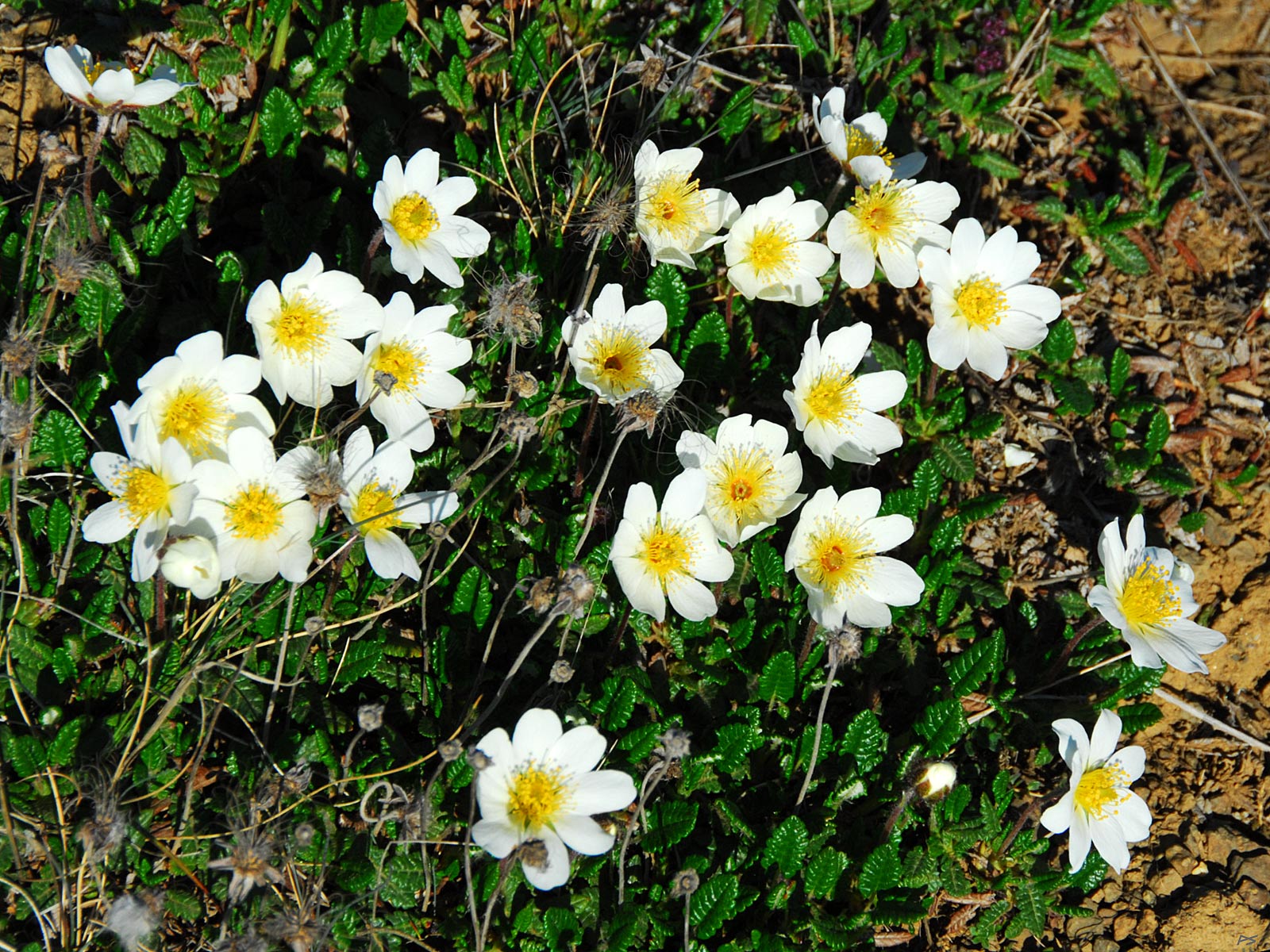
(2010-06-07)
Mountain avens (Dryas octopetala) usually grows in the highlands of the north, but here it grows (also) in the lowlands. It's tough and can grow on any calciferous soil – as long as there is little competition – which is indeed the case here. The dried leaves has been used for making tea. Icelandic 'holtasóley' is the elected (2004) national flower (Þjóðarblóm) of Iceland.
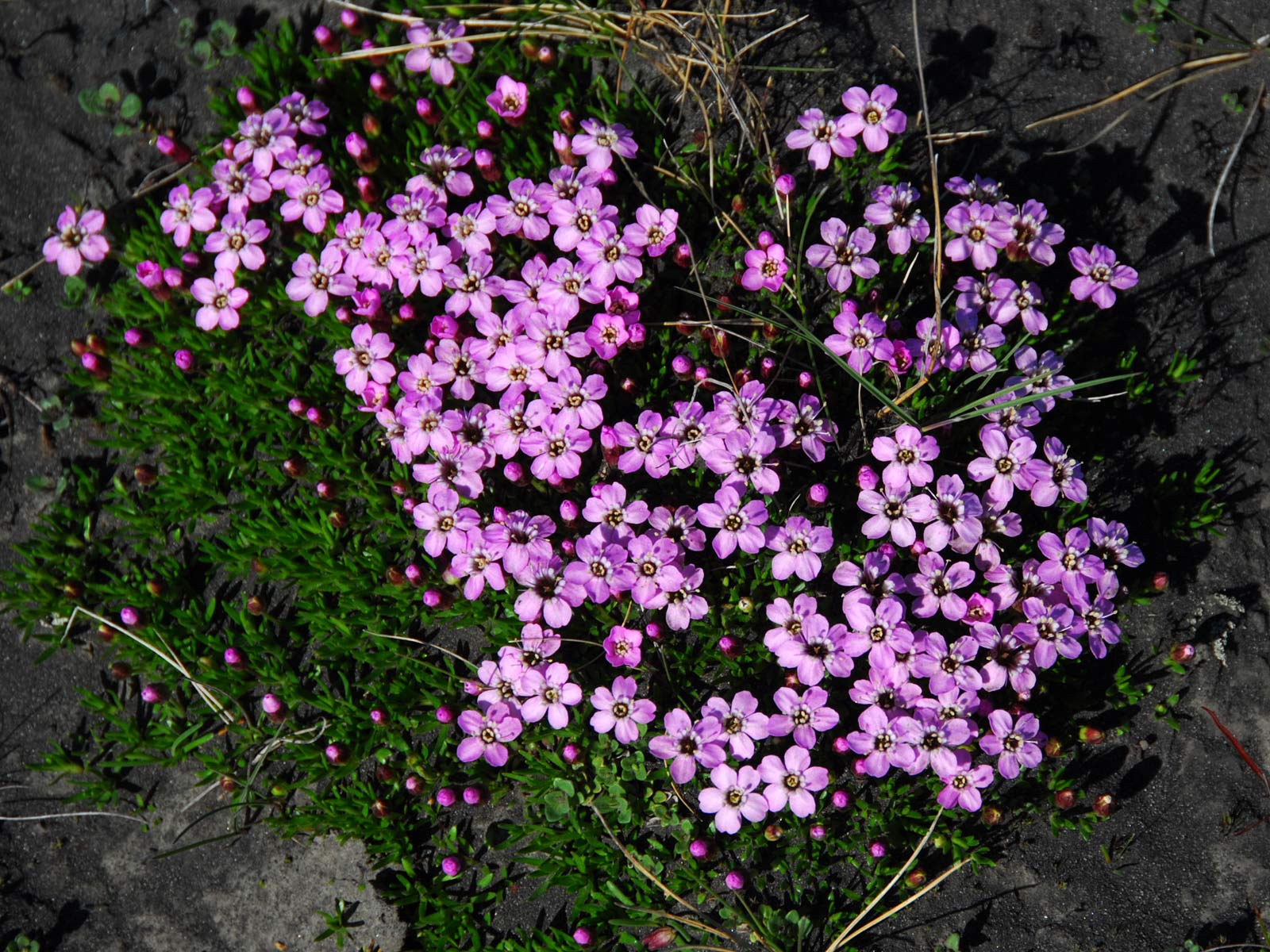
(2010-06-02)
Moss Campion (Silene acaulis) is another spring flower. It usually grows on barren soil, with some preference for the calciferous type – therefore it's found mainly in the highlands in other subarctic countries. In the old days Icelandic 'lambagras' (guess the literal meaning) was boiled and eaten with butter.
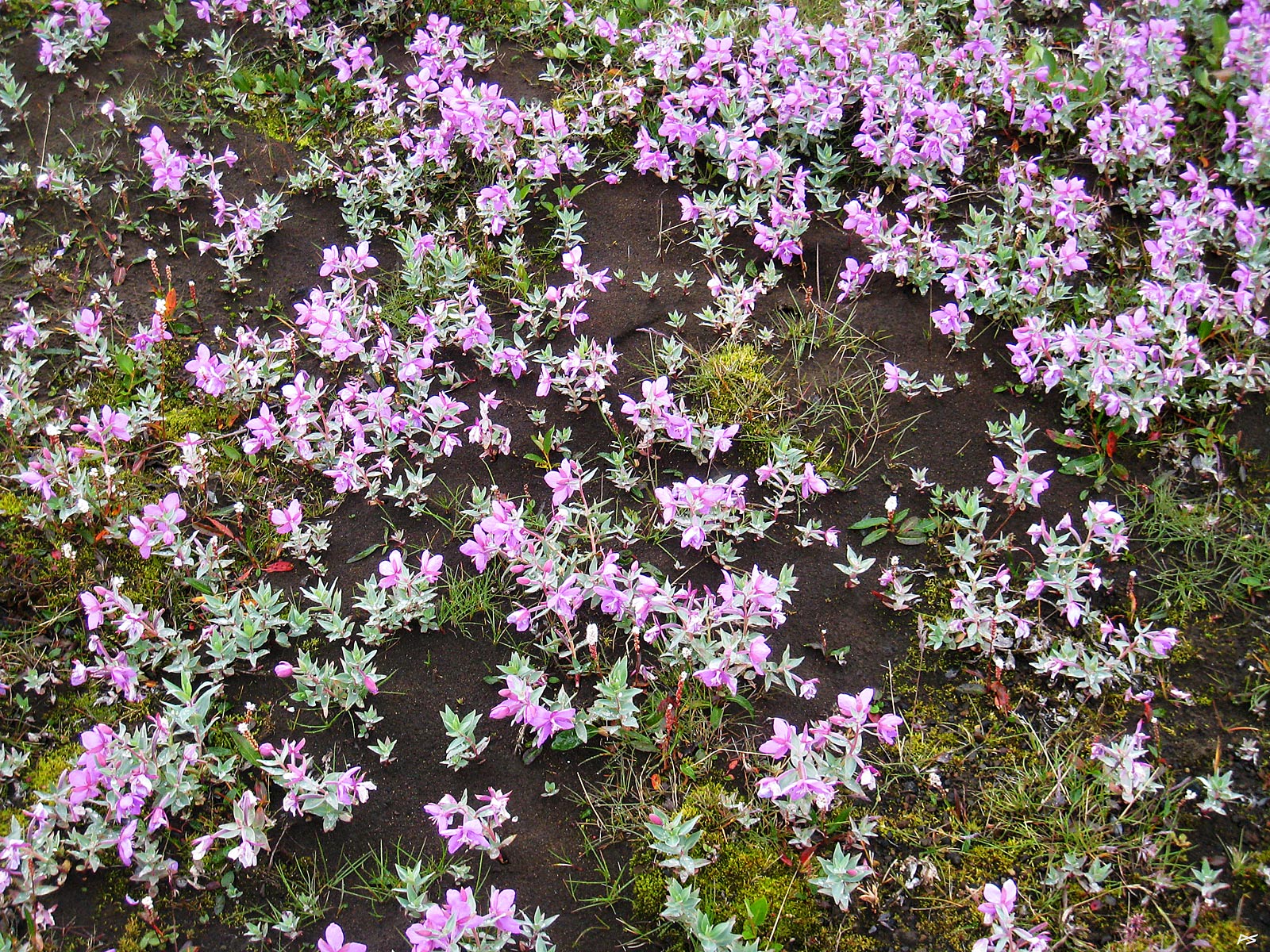
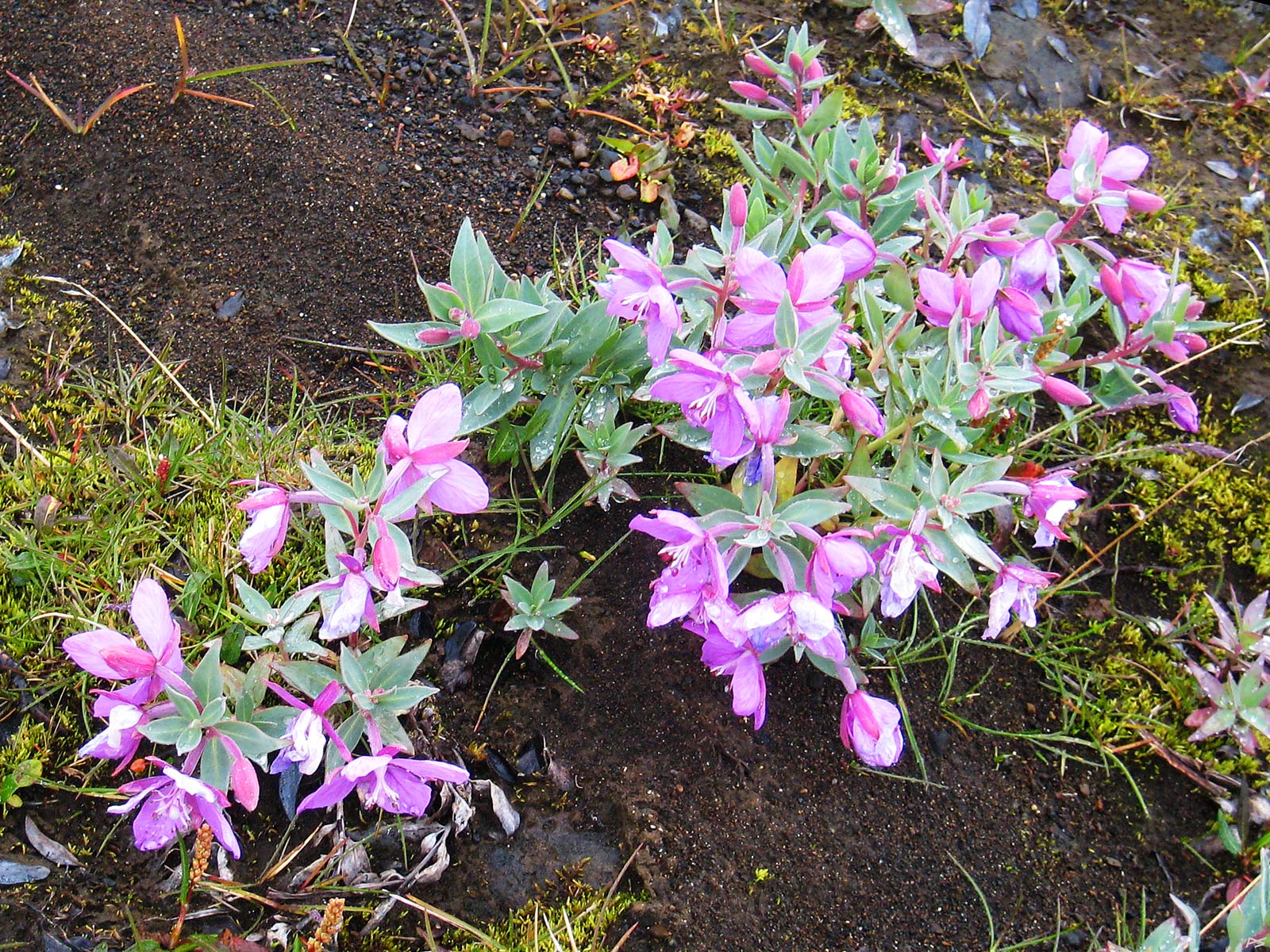
(2013-08-09)
This Arctic River-beauty or Dwarf Fireweed – Icelandic 'eyrarrós' – (Chamerion latifolium) was photographed on a riverbank in Nýidalur, an oasis on the otherwise barren Sprengisandur route. It may look a bit subdued because it had been raining all day. This close relative of our common fireweed is edible, tasting somewhat like spinach. [This is the national flower of Greenland where it has been an important vegetable for the Inuits.]
